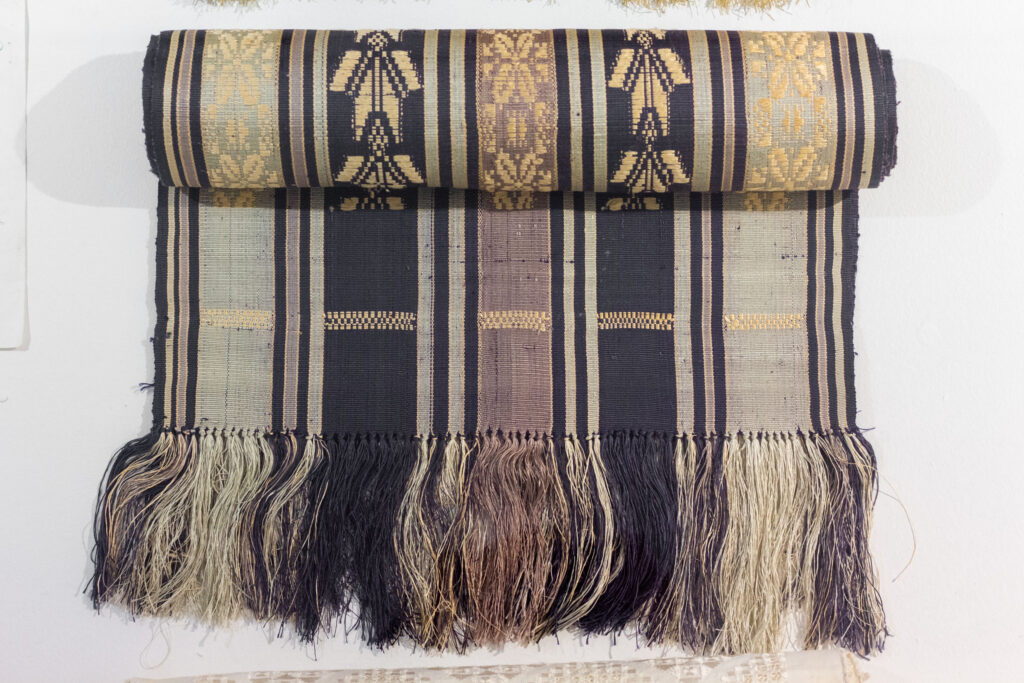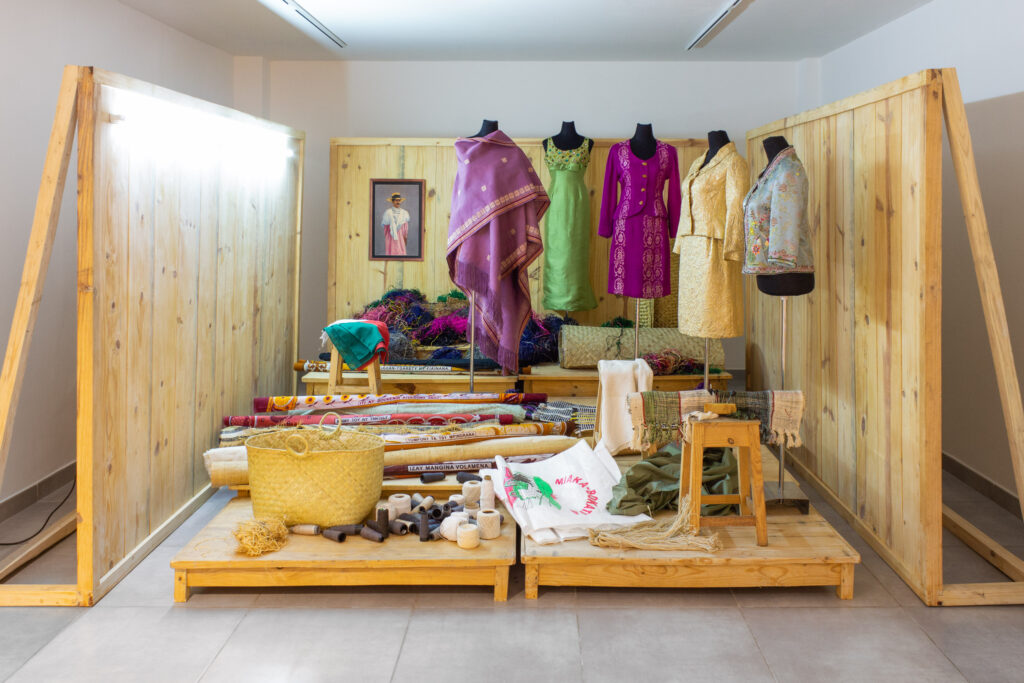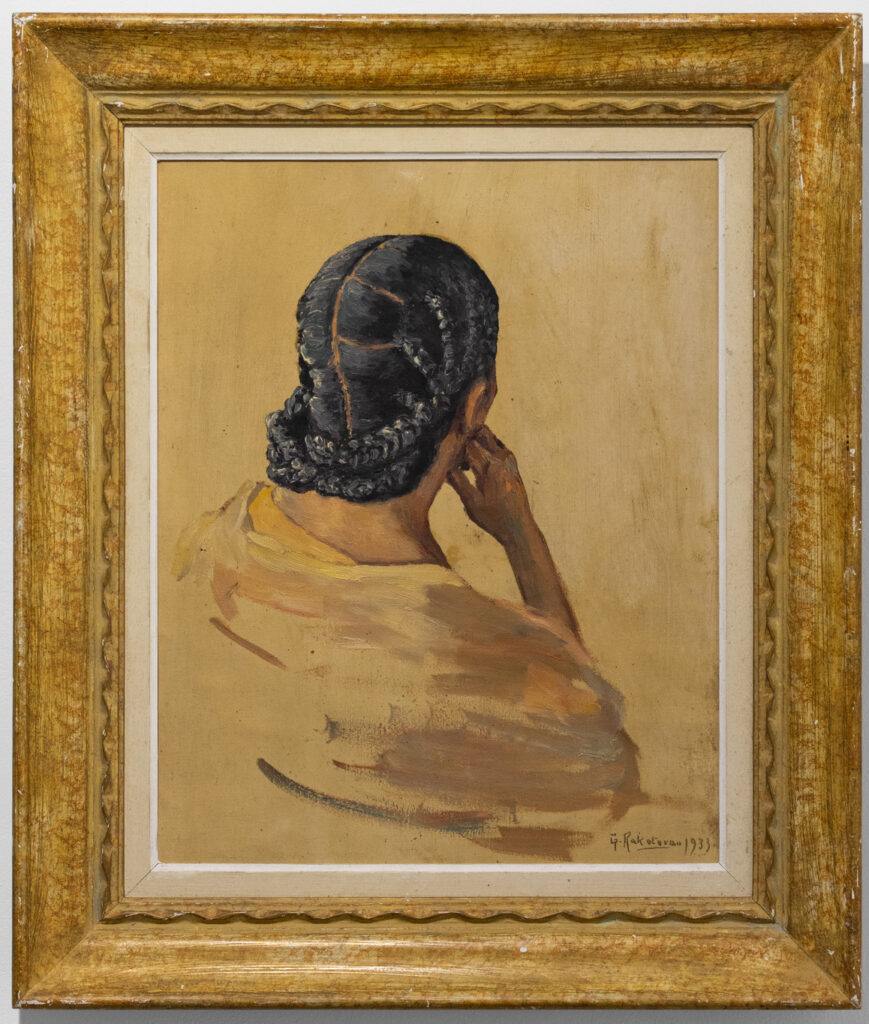This exhibition demonstrates the plurality of artistic approaches and the diversity of aesthetics. The artists it brings together all have a link with lamba, sometimes an object of fascination, sometimes of experimentation, of the imaginary, but also of fantasy.
Matter, weaving and emotions, this thread that runs through time and all Malagasy geographies is an aesthetic subject of first choice, like a breath of life and inspiration.
While photographer Kevin Ramarohetra's images confirm the omnipresence of lamba in the daily life of the Malagasy capital, painters Emile Ralambo and Jean Yves Chen have sublimated this permanent relationship with textiles from other angles in their respective works.
In other proposals, lamba is a puzzling process. Madame Zo, whose weaving practice is nourished by a series of experiments, confronts us with an assemblage of VHS cassettes transformed into furniture. The thread of the film thus crosses another temporality. Opposite the armchair, Joël Andrianomearisoa and Madame Zo confirm in their unprecedented joint installation, shown for the first time in Madagascar, that textile lamba is a game of impossible desire... Like a life in which the heel pierces the mirror to the thread that clings to the shreds of intoxication.
The technical aspect is echoed in Sandra Ramiliarisoa's work in polyfloss. It illustrates an endless enumeration of twisting, weaving and knotting practices.
On a more conceptual level, bemiray feeds Tsiriniaina Irimboangy's Sombin-tantara installation, which brings together her research into lamba, inspired by the vivid memory of her grandmother wearing it according to Malagasy tradition.
As for Gad Bensalem, his installation is a way of calling the absent or deceased father. The actor deconstructs the lamba and pulls the thread to tell the story
of young Doda in his quest for identity, recalling the women who raised him and the father he never knew.
Still in this family vein, but with an architectural approach, visual artist Nadia Randriamorasata traces her genealogy and reconnects with the history of her origins for the creation of her piece: she has decided to erect a series of architectures in homage to her family figures, notably her father, who now belong to the world of her ancestors.
Christian Sanna's photographs show that textiles can be both a garment of sensuality and an adornment of worship, while choreographer and dancer Nazaria Tooj's video piece expresses the idea of rebirth.
Here again, geography is no longer important, as H. Ranaivo exhumes the traditional shroud and turns it into a tailor of life. Christian Lacroix is embroidered by Malagasy hands. Clée Rabeharisoa and Charlotte Razafindrakoto, following their respective stints at Christian Dior and Balmain, dress the high society of the high plateaux.
In resonance with these textile creations, the elegance of the lamba-wearing subjects photographed by Ramilijaona and Rasolonjatovo testifies to a form of sophistication around this sartorial tradition.
Beyond formal exercises, lamba invites itself like whispers to our souls.
For proof, writer Jean Luc Raharimanana weaves his memories, thoughts and states of mind into his novels, short stories and essays. Far from the literary work we might have expected, the author presents for the first time a series of original drawings taken from his notebooks.
Artists exhibiting:
Gad Bensalem, Jean-Yves Chen, Tsiriniana Irimboangy, Charles Edgar Lincoln, Joël Andrianomearisoa, Madame Zo, Nazaria Tooj, Jean-Luc Raharimanana, Alphonse Rakotovao, Gaston Rakotovao, Emile Ralambo, Kevin Ramarohetra, A. Ramiandrasoa, Sandra Ramiliarisoa, Ramilijaona, H. Ranaivo, Nadia Randriamorasata, Rasolonjatovo, Christian Sanna, Clée Rabeharisoa and Charlotte Razafindrakoto.
Curators: Joël Andrianomearisoa, Ludonie Velotrasina and Rina Ralay-Ranaivo


